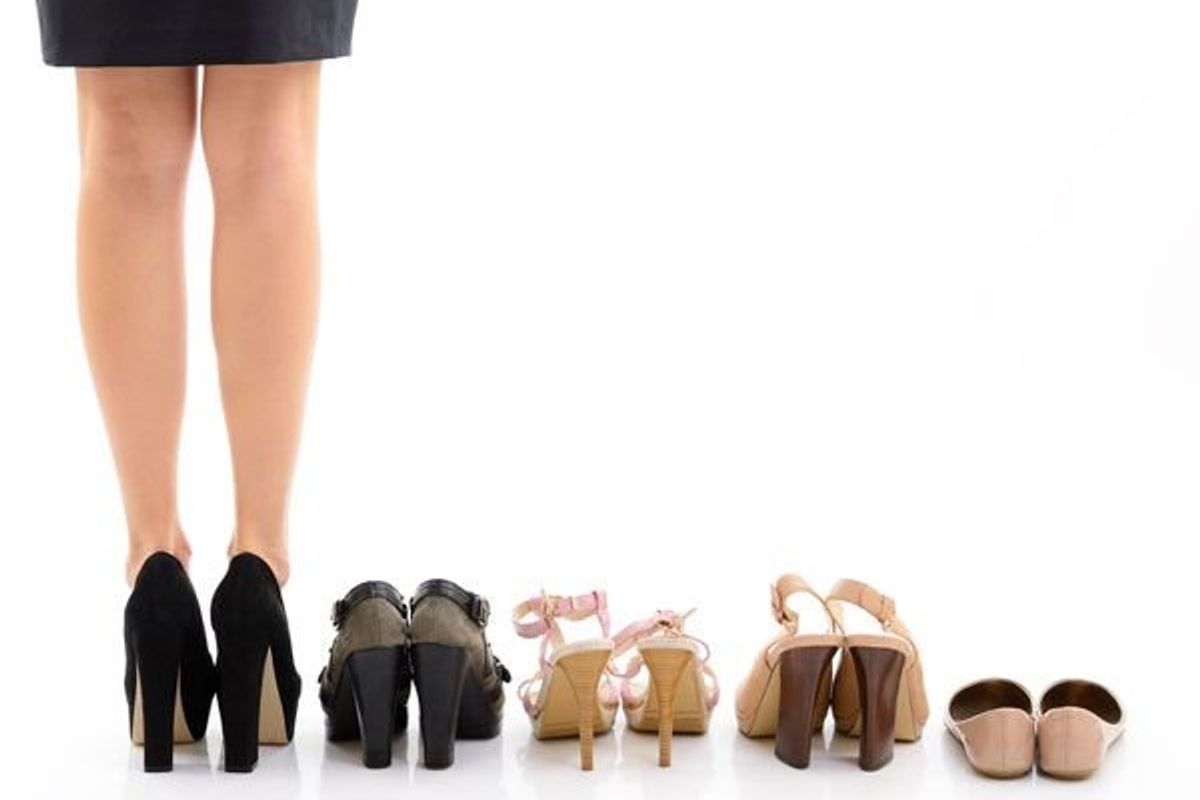My feet feel so happy in my sneakers. With their cushioning and abundant support, they're right in sync with my love of walking, allowing me to tread comfortably for miles on end.
But I must admit, I still love heels. Yet while it's true that I no longer believe in being a slave to fashion at any cost, you have to face the fact that sneakers don't exactly make the best look with skirts, dresses or evening attire.
But heels are no longer so easy to wear. (Were they ever? Maybe not, but so many of us ignored the discomfort in favor of looking glam. Ahem.) Your feet, like so many other things, change with age. One common problem? The loss of fat in the bottom of your feet leading to a loss of natural cushioning.
Ouch.
You know those beautiful high heels with the feminine-looking pointed toes? The ones that elongate your legs, making you feel sexy and powerful? Though they may be hard to resist they can be fraught with problems.
For one, they mess with your gait. If you've ever witnessed a woman teetering past you in high heels, you've no doubt noticed a hint of pain and look of uncertainty on her face. That's because wearing heels makes you take shorter, more forceful strides. That's what a group of scientists found; these findings even existed when the same women walked barefoot. Wearing heels, the researchers found, puts your feet in a constant position of being flexed with your toes pointed. Hardly a comfortable position to be in. This shortens the fibers in your calf muscles and puts greater strain on calf muscles, which the scientists think may ultimately increase the risk of strain injuries.
And still another study found that the longer you wear heels, the more your risk for ankle instability and balance problems, with lowered strength in the muscles along the front and back of the ankle. High heels “alter the natural position of the foot-ankle complex,” which “travels up the lower limb at least as far as the spine,” they say.
According to the American Osteopathic Association, one in ten women wear high heels at least three days a week. A third have fallen while wearing heels. And up to a third of women suffer permanent problems as a result of wearing heels for too long.
But we still love our heels. Despite the negative press, so many of us still want to wear them. A survey by the American Podiatric Medical Association (APMA), found that even though the majority of heel wearers complained of foot pain, nearly half of those polled still wear high heels.
Here's how you can have your heels and wear them, too:
- Many podiatrists recommend avoiding heels higher than two inches. Go higher and your body weight is shifted forward, putting more pressure on the all of your foot and your toes, they say.
- Wear a shoe with as wide a toe box as possible. A narrow toe box squeezes the toes, leading to toe deformities including bunions, hammertoes and calluses and even ingrown toenails.
- Look for shoes with padding in the forefoot area so your feet don't slip forward. This will also help cushion your toes and ball of your foot. To relieve pressure, the shoe needs to be as wide as possible, have a more cushioned sole and incorporate some support for the foot to spread the load. A strap across the foot can also help to hold the foot 'back' in the shoe and reduce pressure on the ball of the foot, says podiatric surgeon and Vionic Shoes Innovation lab member Trevor Prior
- When trying on heels in the store, go beyond the carpeted areas in the shoe department; venture away and walk on bare floors.
- Carry your shoes. Wear comfortable shoes (like sneakers) to get where you're going, then change into your heels when you arrive. And if and when you do wear those heels, try to wear them when you're doing limited walking or standing.







